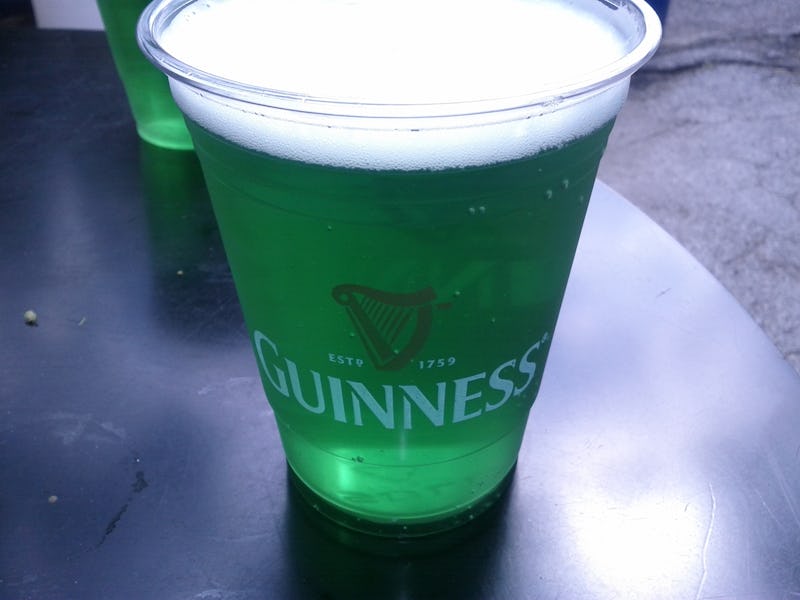Why Not Have a Green Beer on St. Patrick's Day? Food Coloring in Your Intestines
Green 3 bad. Spirulina good.

St. Patrick’s day is historically the day where people play up their Irishness as an excuse to get drunk. This generally requires quite a lot of beer. Globally, people consume about 4.2 billion pints over the course of the holiday. But because regular beer is boring, it’s increasingly popular to dye beer the rich shade of the Emerald Isle. Why just wear green when you can ingest it as well?
The thing is, pumping our stomachs with green dye isn’t an awesome way to celebrate our GI tracts. While it’s true that the FDA has given the stamp of approval to select groups of artificial colors and one day of green beer chugging isn’t likely to do more than give you gastrointestinal discomfort, it’s still worth knowing what’s actually in that drink.
Green 3 — also known as Fast Green — is one of the seven artificial colorings approved by the FDA. It’s one of the least used food dyes, typically added to make canned vegetables look more like actual vegetables. Technically a synthetic organic compound, studies demonstrate that while not carcinogenic, it is very hard on human intestines.
Although there’s a chance your local pub is adding Green 3 to its Guinness, more common are drops of something like McCormick’s green food color, typically found in grandmother’s kitchens. This food coloring doesn’t actually include Green 3 — it’s made of water, propylene glycol, propylparaben, Yellow 5, and Blue 1. Propylene glycol is an artificial liquid that absorbs water, also used as a component in antifreeze and in artificial fog machines. The FDA states that it is “generally recognized as safe” for use in food. That said, it’s not doing you any favors.
Both Blue 1 and Yellow 5 have been shown to cause hypersensitivity reactions in allergy-prone humans. But the real drama with Yellow 5 are the conflicting studies that explore its relationship to ADHD and other behavioral issues in children. After public demand for accountability, the FDA released an analysis of 35 years of scientific studies, stating that it could not find conclusive proof that food dyes could be connected to hyperactivity. However, enough scientific studies have found a connection that the European Union requires food items containing these dyes have warning labels.
If you still want a green beer, you can turn to natural alternatives. Spirulina, a blue-green algae rich in protein, vitamins, and minerals, takes center stage in the San Antonio-brewed Spirulina Wit — which apparently is very green and tastes very “vegetable-y.” It is was also brewed into a less successful Dogfish Head craft beer, which tasted “like a pond.”
Spirulina, it turns out, is super good for you: University of Maryland Medical Center studies show that it can boost the immune system and protect against allergic reactions. If you want to mix it in your beer but not have it taste terrible, add 1/2 teaspoon of spirulina and one tablespoon of wheat grass juice into your 16-ounce beer.